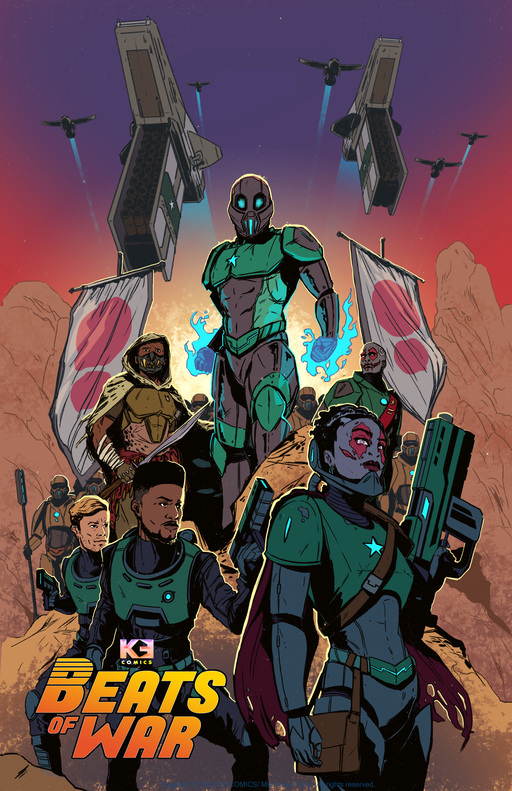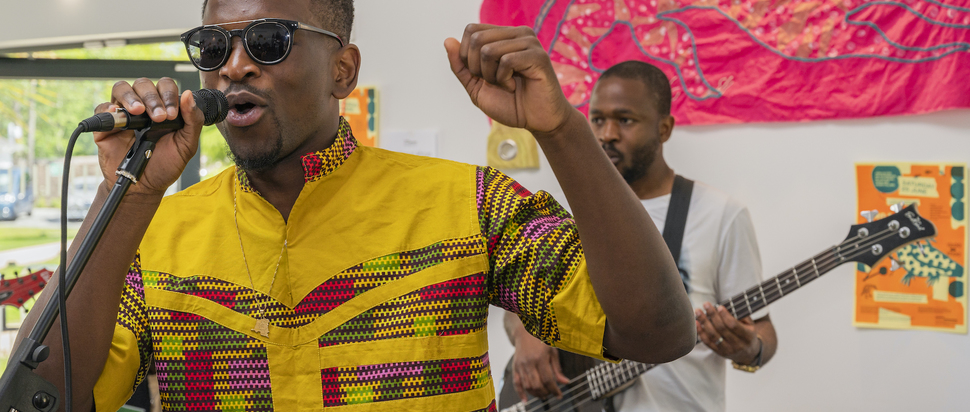Tell Us A Story: In conversation with Natasha Thembiso Ruwona
Ahead of Our Stories Between the Myths and Memories, curator Natasha Thembiso Ruwona discusses storytelling, museum spaces, and connecting communities
Natasha Thembiso Ruwona and I meet over Zoom – her from the living room of her Glasgow flat, me from my apartment in Brussels. It’s a set-up I know well. The two of us have worked closely together since 2020 and meet – virtually – at least once a week.
On Saturday 22 and Sunday 23 October, Natasha – a Scottish-Zimbabwean artist, researcher, and creative programmer – has programmed Our Stories Between the Myths and Memories at the David Livingstone Birthplace Museum in Blantyre. The two-day programme, a partnership between the museum and The Skinny, will explore storytelling through fiction, history, poetry, dance, and music, with workshops hosted by creative practitioners from the African Scottish diaspora.
Located south-east of Glasgow, the David Livingstone Birthplace overlooks the River Clyde and is surrounded by sprawling grounds. Livingstone was born in a small tenement flat in Shuttle Row and this building is now the independent museum dedicated to preserving and re-examining the legacy of the missionary, explorer, and abolitionist in a contemporary context.
“In my initial chats with David Livingstone Birthplace and The Skinny, we were thinking about how to bring communities into the space and what brings people together,” Natasha explains to me. Through reflecting on the stories that the David Livingstone Birthplace are telling, the stories artists of the African Scottish diaspora are telling, and how these can act as bridges between people, storytelling became the overall theme.
“Stories are often a mixture of myth or fact based on a truth that has been altered in different ways,” Natasha continues. “Often museums become storytellers themselves, selecting different parts of history and erasing others.” A museum is not a neutral space. And so, as a programmer, how does she navigate the challenges and difficulties of working with, and holding space for others in an institution that may have contributed to this erasure?
“I guess it is quite difficult,” she says. “I think I'm generally a bit wary about working with institutions, especially museums and galleries. But I have worked with the museum as a researcher for most of this year. I really believe in the work they're doing and their interrogation of David Livingstone's legacy. The ways that they are approaching this history, answering questions, provoking alternative ways of thinking about how important figures are upheld, and their relationship to national identity feels genuine.”
Natasha and I often discuss the pressures and challenges of working with long-standing institutions. “I don't think going into spaces with the intention of changing them is ever healthy,” says Natasha, during our chat. “I think it's just looking at different institutions and institutional practices and thinking, what can be of benefit here? What can be left behind? And, what happens when you create a space for people and give them that space? What will they do with it, and what do they want to do with it?”
Interested in the opportunities to raise new questions and challenge narratives when bringing contemporary storytellers into a historical environment, Natasha didn’t enter this role with a grand curatorial vision of what the weekend should look like. Rather, the weekend was approached with a certain openness: “What does this mean now, and where do we go in the future with that? It’s interesting to have all these different points in time sit together. And I think the contributions will speak to that.”
It is also interesting to have multiple types of creative contributions sit together outside of the Central Belt, and in a space that is traditionally focused on consuming knowledge rather than artistic expressions.

Beats of War
On the Saturday, I will be hosting a panel discussion exploring storytelling across different cultures and communities. Followed by a comic book workshop held by Glasgow-based filmmaker and writer Etienne Kubwabo, creator of Beats of War, a comic series featuring Scotland’s first Black superhero. Interwoven throughout the day will be readings from layla-roxanne hill and Inga Dale followed by a closing Dance Party hosted by Jambo! Radio.
Sunday’s focus is on decolonisation, featuring two ‘in-conversation’ events, the first with artist Adebusola Ramsay and the second between Natasha and Clementine Burnley, exploring Scottish and African connections through collaborative writing. There will be live music from the Congolese Gig Group before the weekend will be closed with a performance by Ashanti Harris.
The range of art within the programme reflects Natasha’s feeling that the weekend should not be over stimulating or too heavy for audiences. Conversations about decolonisation are necessary – but so is having space to breathe and connect. “I think that, for me, a big part of being a curator is creating and holding that space for people to be with each other. Ultimately, I want people to relax and have a good time, listen to performances, be part of conversations and dance!” says Natasha. “Being able to bring together so many different voices into one project that speak to the breadth of Scottish talent and the Black creative community really excites me.”
Our Stories Between the Myths and Memories, David Livingstone Birthplace, Blantyre, Sat 22 Oct & Sun 23 Oct
Tickets are free from eventbrite.co.uk
